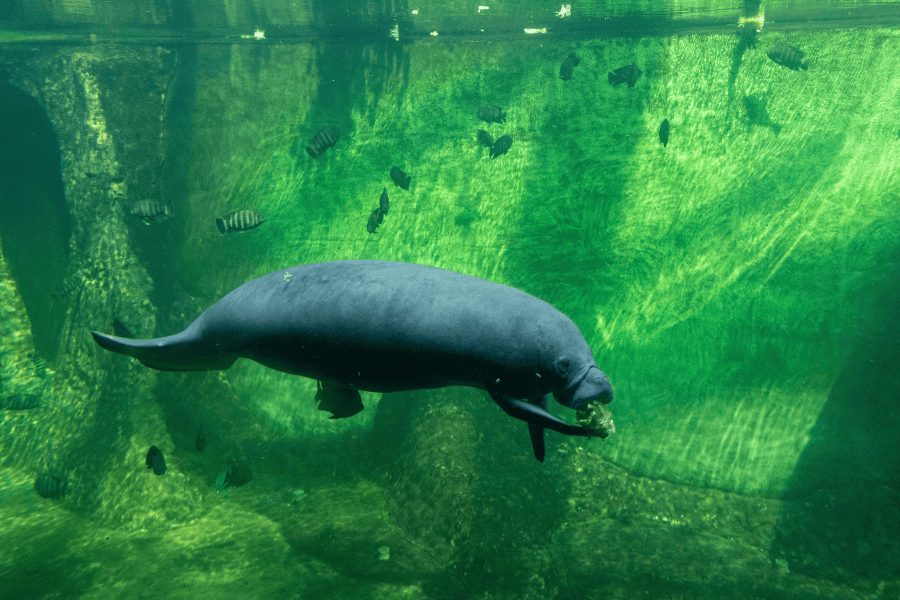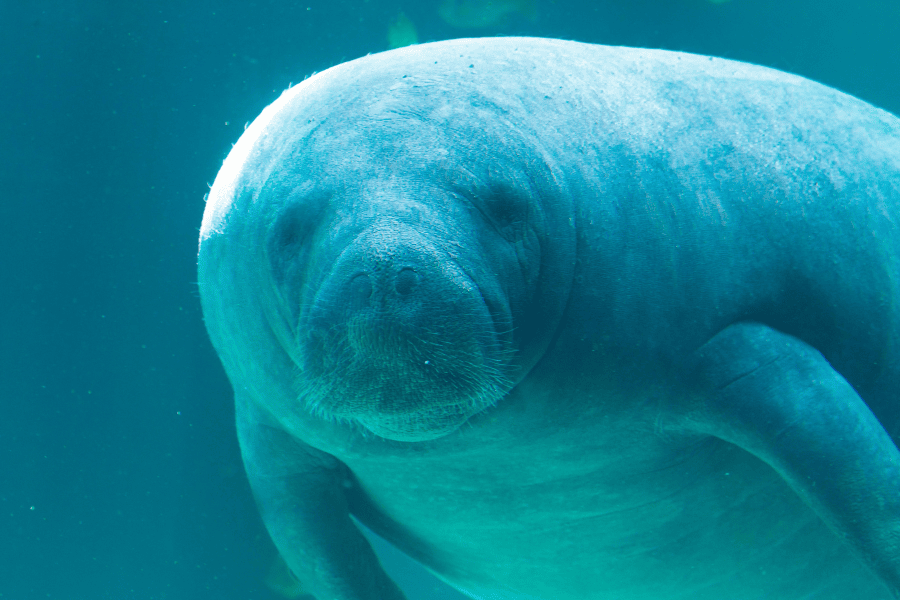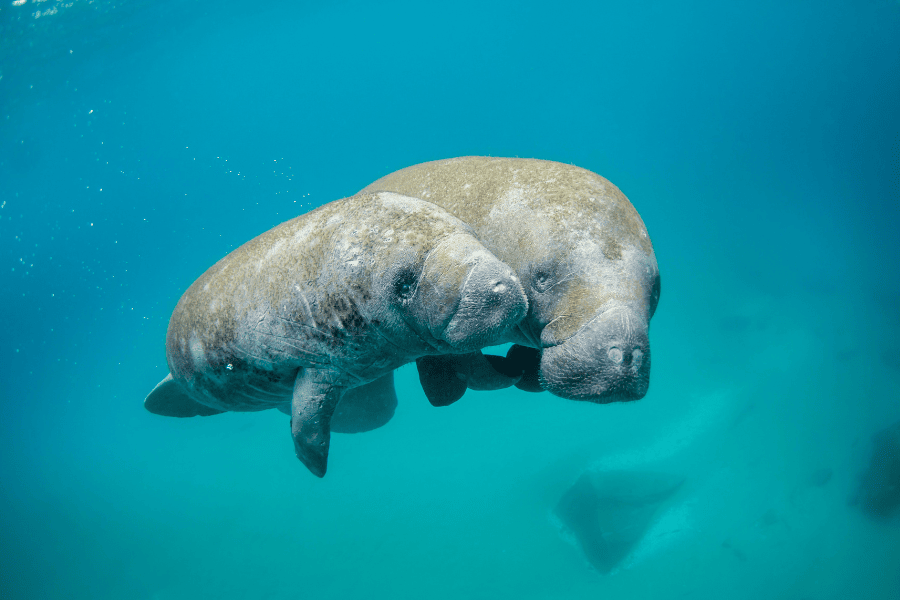
Fun Facts about the Amazonian Manatee
One of only three manatee species in the world, the mystifying Amazonian Manatee was once found throughout the Amazon River Basin. However, due to steady hunting activities for its meat and oil, habitat loss, and accidents with ships, manatee sightings have become sparse. Lucky travelers can spot this large freshwater dweller in the water ranging from the mouth of the Amazon River to the upper reaches of the tributaries of Brazil, Colombia, Ecuador, Guyana and Peru.
While sailing with us, our expert wildlife guides aboard Aqua Nera and Aria Amazon will be there to keep an eye out for these curious creatures. In the meantime, read on for some bite-sized facts about our aquatic friends.
Friendly and fearless
The Amazonian Manatees are also known as sea cows for their large, lumbering appearance, grazing habits and placid demeanor. With no natural predators, they have not developed an aggression response, and are generally friendly. Even though they can reach an imposing 590 kg (1,300 lb) and grow up to 2.8 m (9.2 ft) in length, they tend to act like gentle, oversized puppies and respond warmly to humans.
Christopher Columbus mistook manatees for mermaids
Way back in 1493, sailing near the Dominican Republic, Italian explorer and navigator Christopher Columbus reported the sighting of three mermaids’ tails breaking the surface of the ocean. Of course, those tails didn’t belong to an enticing sea siren – Columbus had actually inscribed the first recorded encounter of manatees in North America.
A relative of the largest land mammal
Manatees might resemble fellow aquatic creatures like walruses and seals, but they’re surprisingly more closely related to elephants. Upon closer inspection, you’ll notice the visual similarities between the unlikely pair. Both mammals have thick, wrinkled brownish gray skin and sparse, coarse hairs covering their bodies — manatees’ hairs are known as vibrissae and help them to sense vibrations in the water around them.
Grazing on grasses

The Amazonian Manatee is exclusively herbivorous with its diet consisting largely of algae, and aquatic plants and grasses. It spends up to eight hours a day grazing on the equivalent of 10% of its body weight to store extra fat reserves during the wet season when vegetation is more plentiful. Thanks to this abrasive plant diet, manatees have to continually grow new teeth to replace their worn out ones.
When dry season rolls around, the Amazonian Manatee can survive for up to seven months with little to no sustenance thanks to its large fat reserves and low metabolic rates — only 36% of the usual mammal metabolic rate.
Not so slow swimmers

Although they might look bulky and not particularly streamlined, Amazonian Manatees are, in fact, excellent swimmers thanks to their flexible flippers for steering and a large, flat, paddle-shaped tail. Despite their size, they can clock speeds of up to 8 km/h (5 mph) and dive to depths of up to 10 meters (33 feet). They can also submerge for up to 14 minutes at a time before surfacing to breathe.
Sing with me

The Amazonian and West Indian Manatees are both known to be quite vocal, whether they’re on their own or trying to talk to a fellow manatee –- producing a variety of sounds that are used for communication.
Similar to human babies, manatee calves vocalize at or soon after birth — an important part of the mother-calf bonding process after an arduous 13 month gestation for a single calf.
Conservation efforts
With manatee numbers on a decline, the species is more vulnerable than ever. In an effort to save these gentle giants, Aqua Expeditions has supported the rehabilitation of manatees since 2009, in partnership with the Amazon Rescue Centre.
Sail with Aqua Expeditions to discover more about the Amazonian Manatee and other incredible species only found in this ecologically unique part of the world. Contact our expedition consultants to plan your trip today.



